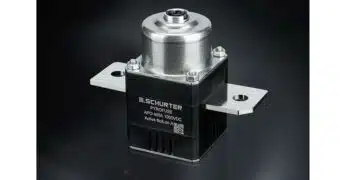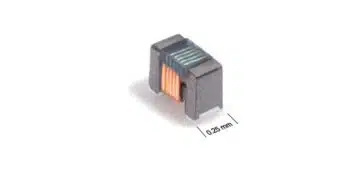source: EBNonline article
Adrien Sandrini, CEO, Precogs 8/10/2017
I’ve always been skeptical about the added value of those many weeks spent trying to renegotiate and obtain fair prices for the electronic components we purchase. Given the number of references, it looks more like inefficient data exchange sessions than real negotiations to seek win-win situations. However, this is likely to change, and that’s truly good news.
The electronic component industry has always been prone to price discrepancies. It always strikes me how two different EMS/OEM/ODM can buy the same components with prices ranging from one to three times despite similar quantities.
While there are specific and concrete reasons behind those price discrepancies, I’m convinced that digitization will bring a new wave of transparency that will force commodity component prices to reach a worldwide equilibrium. This will lead to a new purchasing era that will be much more about speed-to-market, innovation, exclusivity, and gainsharing in supplier relationships than about harvesting three to five percent savings from contracts coming up for renewal.
Why such big discrepancies?
Before discussing digitization consequences, it’s important to understand why semiconductor prices are so different from one buyer to another.
Steep semiconductor learning curve
The learning curve is simply the long-term erosion of manufacturing costs related to production experience. The learning curve plays a critical role in the semiconductor industry since it is very, very steep.
As a former Intel executive told me: “We all disclose our fab utilization rate but the most secret metric is our yield.”
He then explained how a chipset is like a garden. To work limited-spaces as intensively as you can, you need to use space efficiently and to follow yield-maximizing strategies. In the garden, eliminate unnecessary pathways by planting crops in blocks rather than in rows, plant lettuce and spinach to grow in the shade of tomatoes, respect proper carrot spacing, plant crops that take a while — such as carrots — alongside faster-growing crops such as radishes, and so on.
The more experienced the gardener becomes, the more he knows how to design a high-yield garden.
Dies on a wafer are like small gardens. You can optimize their designs to shrink their sizes and drastically decrease production costs.
The more production experience is gained, the more you learn how to make an optimized product: designs are improved, die sizes are shrunk, process is debugged, wafer fab yields rise and even assembly yields rise. As yields rise more product is shipped per unit of cost, thus revenues rise while manufacturing costs stay constant or even decline, the average cost per device declines, leading to lower prices and higher volumes.
Price control mechanisms: Why doesn’t the learning curve help everyone?
Some customers will benefit from those lower costs: this is the case of high-volume customers on highly competitive markets (i.e. computer, communication, consumer). Those will surf down the curve and benefit from better prices.
However, some customers will only get a few percent price reduction every year, no matter what the production cost savings are. This is the case of high-mix, low-volume customers on less competitive markets (industrial, medical, military, aeronautic). Their products often have very long life cycles and huge safety requirements making it very complicated to redesign a product and change a component. As a result: manufacturers have no pressure to lower their prices since they are sure of keeping all the volumes for the next 10 or 20 years of product lifetime.
But this can only be true if manufacturers keep control over their distributors. Indeed, distributors have access to good prices thanks to high-volume customers. Manufacturers need to keep it clear that those good prices should be restricted to a few end customers only.
This is why when you request a quote on a few manufacturing part numbers (MPN), distributors will always request you to disclose the customer part numbers (CPN), the end products and the end customers beforehand. They will then cross your information with the manufacturer price registration lists. If a price is registered, distributors will not be able to answer below a price (often high) fixed by the manufacturer.
Just an example to see how far the control can go: I went on an example of a high price (slightly higher than public online prices) on a high value reference ($500k/year, which starts to be high in Western countries). On one of the top authorized distributor website (that did not have the contract), I compared the price before, and after being logged with the customer login. Logged, the price was 80% higher than the public price! Higher, not lower!! Next, I used the login of another customer, and the price dropped 30% lower than the public price. The difference? +150% between those two customers for the same transaction.
Digitization will force price transparency
Those price control mechanisms are designed against price transparency. But I’m convinced the digital revolution to come will force price transparency, because digitization will empower buyers with real-time data on a global scale.
There are already signs that it has begun. The Internet brought worldwide publication of public prices thru e-commerce web sites. This led to online price comparison tools. As a result, manufacturer pricing policies tend to get global: previously per country, now per continent, and soon worldwide. A few years ago, one of our main activities was to provide real-time alerts when a negotiated price was higher than a public catalog price. Of course, this helps to correct a few price discrepancies. Already, Amazon is selling electronic components. I’m not sure they will accept custom prices per customer yet… And I’m sure manufacturers are under pressure to change their rules.
The new era of purchasing & supplier partnership
The good news is that price transparency will make the old line-by-line price negotiation obsolete for most components. Savings will be tied to annual rebates for reaching certain volumes or paying earlier.
Further, we will be more focused on making sure we have the right distributor and manufacturer portfolios to bring innovation and value to our end customers. We will seek for partners helping our go-to-market by identifying the best innovations. We will look for exclusive commercial relationships and for sharing supplier risks and rewards. And all this is a tenfold improvement over getting another penny off the unit price.





























